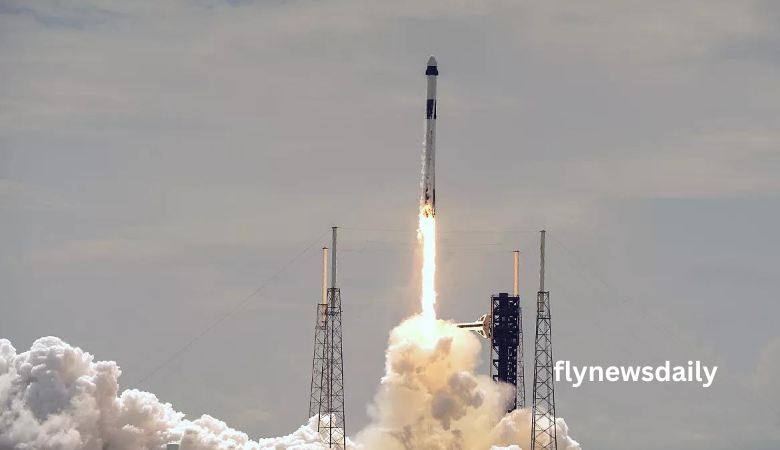
Space exploration has always been a testament to human ingenuity, but it’s not without risks. SpaceX to the Rescue: Mission Set to Bring Stranded Astronauts Back Home promises to be a pivotal event in the history of space travel, showcasing how far we’ve come in ensuring astronauts’ safety. This mission, led by SpaceX, aims to bring back astronauts stranded in space after an unforeseen technical failure left them unable to return on their own.
The Emergency in Space: What Happened to the Stranded Astronauts?
Recently, astronauts aboard a mission found themselves in a precarious position when their spacecraft suffered critical damage. This left them unable to execute the return journey to Earth. Such emergencies, while rare, underscore the importance of having contingency plans in place. The situation developed rapidly, forcing both NASA and SpaceX to strategize and collaborate on the best course of action.
The stranded astronauts are currently safe in orbit, but time is of the essence. Conditions in space are unpredictable, and every moment counts in ensuring their safe return. SpaceX’s Dragon Capsule emerged as the most viable option for this rescue, with its proven track record of reliability in space missions.
The Importance of Astronaut Rescue Missions in Space Exploration
Space is unforgiving. Missions are meticulously planned, but the unexpected can still occur. Astronaut rescue missions are crucial not just for the safety of the individuals involved but for the continued growth of space exploration. Rescue missions remind us that, despite the advancements in technology, there are always risks associated with leaving Earth’s atmosphere.
With more private companies like SpaceX entering the space industry, it’s important to have well-defined protocols for emergencies. The current mission is a testament to the need for constant innovation and preparation.
A Brief History of Space Rescue Missions
Rescue missions are not a new concept in space exploration. In the early days of space travel, both the Soviet Union and the United States dealt with life-threatening situations in space. For instance, the Apollo 13 mission is perhaps the most famous example of a successful rescue effort, where a catastrophic in-flight failure led to an emergency return to Earth. Lessons learned from that mission, as well as others over the decades, have shaped how we respond to crises in space today.
How SpaceX is Leading the Rescue Mission
SpaceX has revolutionized space travel in recent years, and it’s no surprise that the company was chosen to lead this rescue. From launching reusable rockets to successfully docking with the International Space Station (ISS), SpaceX’s track record is stellar. Their Dragon Capsule was selected for the rescue due to its advanced life-support systems and proven safety protocols.
Elon Musk’s vision of creating a sustainable space industry has driven SpaceX to push the boundaries of what’s possible. This mission marks another significant milestone for the company.
The Role of Dragon Capsule in SpaceX Rescue Operations
The Dragon Capsule is central to SpaceX’s operations. Designed to carry humans to and from space, the capsule has several key features that make it ideal for rescue missions. These include autonomous docking capabilities, enhanced thermal protection, and cutting-edge life support systems.
In this particular rescue, the Dragon Capsule will dock with the stranded spacecraft, transfer the astronauts, and return them safely to Earth.
The Timeline of the SpaceX Rescue Mission
The rescue mission is scheduled to take place within the next few days, with a clear timeline laid out by NASA and SpaceX. The astronauts will be prepped for transfer into the Dragon Capsule, and after a final systems check, they will re-enter Earth’s atmosphere. The entire operation, from launch to re-entry, is expected to take approximately 72 hours.
Coordination Between NASA and SpaceX for the Rescue
This mission is a perfect example of how NASA and SpaceX work together in emergencies. NASA provides the oversight and expertise, while SpaceX offers the hardware and logistics for space travel. The collaboration between these two entities ensures that every aspect of the rescue is meticulously planned, with contingency measures in place should anything go wrong.
The Challenges and Risks Involved in the Rescue Operation
Rescue missions in space come with their own set of challenges. One of the biggest risks is re-entry into Earth’s atmosphere, where even minor miscalculations can lead to disaster. Additionally, there are potential technical challenges, such as ensuring the integrity of the Dragon Capsule’s heat shield, which protects the astronauts during re-entry.
Astronauts’ Psychological and Physical Condition While Waiting for Rescue
Being stranded in space can take a toll on the astronauts, both physically and mentally. Prolonged exposure to microgravity can lead to muscle atrophy and bone density loss. Psychological stress is another significant factor, especially in high-stakes situations like this.
However, astronauts are trained to handle these scenarios, and communication with mission control helps keep them informed and focused during the rescue process.
Innovations in Space Rescue Technology: How SpaceX is Pushing Boundaries
One of the exciting aspects of this mission is the innovation involved. SpaceX is using some of the most advanced technology available, from artificial intelligence systems that assist with docking to real-time communication networks that ensure seamless coordination between spacecraft.
These technologies not only help in the current mission but also pave the way for safer future missions, including those involving commercial space travel.
Public Response and Interest in the SpaceX Rescue Mission
The public has shown immense interest in this mission, with social media buzzing with updates and speculations. Media coverage has been extensive, highlighting the growing fascination with space exploration. SpaceX’s brand has become synonymous with innovation, and this mission is further solidifying its reputation as a leader in the space industry.
Why SpaceX was Chosen: Examining the Company’s Stellar Track Record
SpaceX’s reliability and innovative approach make it the top choice for missions like these. The company has successfully completed numerous launches, including missions to the ISS. Its reusable rockets have drastically reduced the cost of space travel, making it a more viable option for missions of all kinds.
In comparison to other space agencies and companies, SpaceX has consistently proven that it can handle the complexities of space travel, making it the clear choice for this critical mission.
What Happens After the Rescue: Post-Mission Analysis
Once the astronauts are safely back on Earth, SpaceX and NASA will conduct a thorough analysis of the mission. This will include reviewing the performance of the Dragon Capsule, assessing any potential risks that were encountered, and identifying areas for improvement in future rescue missions.



